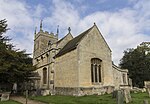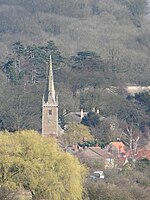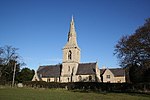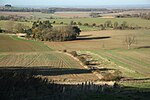Belton House is a Grade I listed country house in the parish of Belton near Grantham in Lincolnshire, England, built between 1685 and 1687 by Sir John Brownlow, 3rd Baronet. It is surrounded by formal gardens and a series of avenues leading to follies within a larger wooded park. Belton has been described as a compilation of all that is finest of Carolean architecture, said to be the only truly vernacular style of architecture that England had produced since the Tudor period. It is considered to be a complete example of a typical English country house; the claim has even been made that Belton's principal façade was the inspiration for the modern British motorway signs which give directions to stately homes.
For about three centuries until 1984, Belton House was the seat of the Brownlow family, which had first acquired land in the area in the late 16th century. Their heirs, the Cust family, were created Baron Brownlow in 1776. Despite his great wealth Sir John Brownlow, 3rd Baronet, chose to build a comparatively modest house rather than one of the grand Baroque palaces being built by others at the time. The contemporary, if provincial, Carolean style was the selected choice of design. Nevertheless, the new house was fitted with the latest innovations, such as sash windows for the principal rooms, and followed the latest thinking on house-planning, in seeking to separate those parts of the building that were for the use of the family from the areas where servants carried out their domestic duties. Successive generations made changes to the interior of the house which reflected their changing social position and tastes, yet the fabric and design of the house changed little.
In August 1914, Belton House and its park were used as the assembly point for the newly-formed 11th (Northern) Division before its deployment in World War I, and in October 1915 it was used as the home depot and training ground of the Machine Gun Corps. During World War II, RAF Belton Park was established in the grounds of the house, as were two RAF Regiment squadrons, by November 1944 1,850 personnel were based at Belton.
The Custs, like many previously wealthy English families, were faced with mounting financial problems. The seventh Baron opened the estate to the public. An adventure playground was built in the nearby woods to attract families to the house as a tourist attraction. However, the financial difficulties were too great and in 1984 they donated the house, with most of its contents, to the National Trust. The trust introduced new features and attractions to fund repairs and conservation. Further revenue is raised from the use of the property as a filming location, and from licensing the Marble Hall for civil weddings. It was visited by 340,290 people during 2021.










